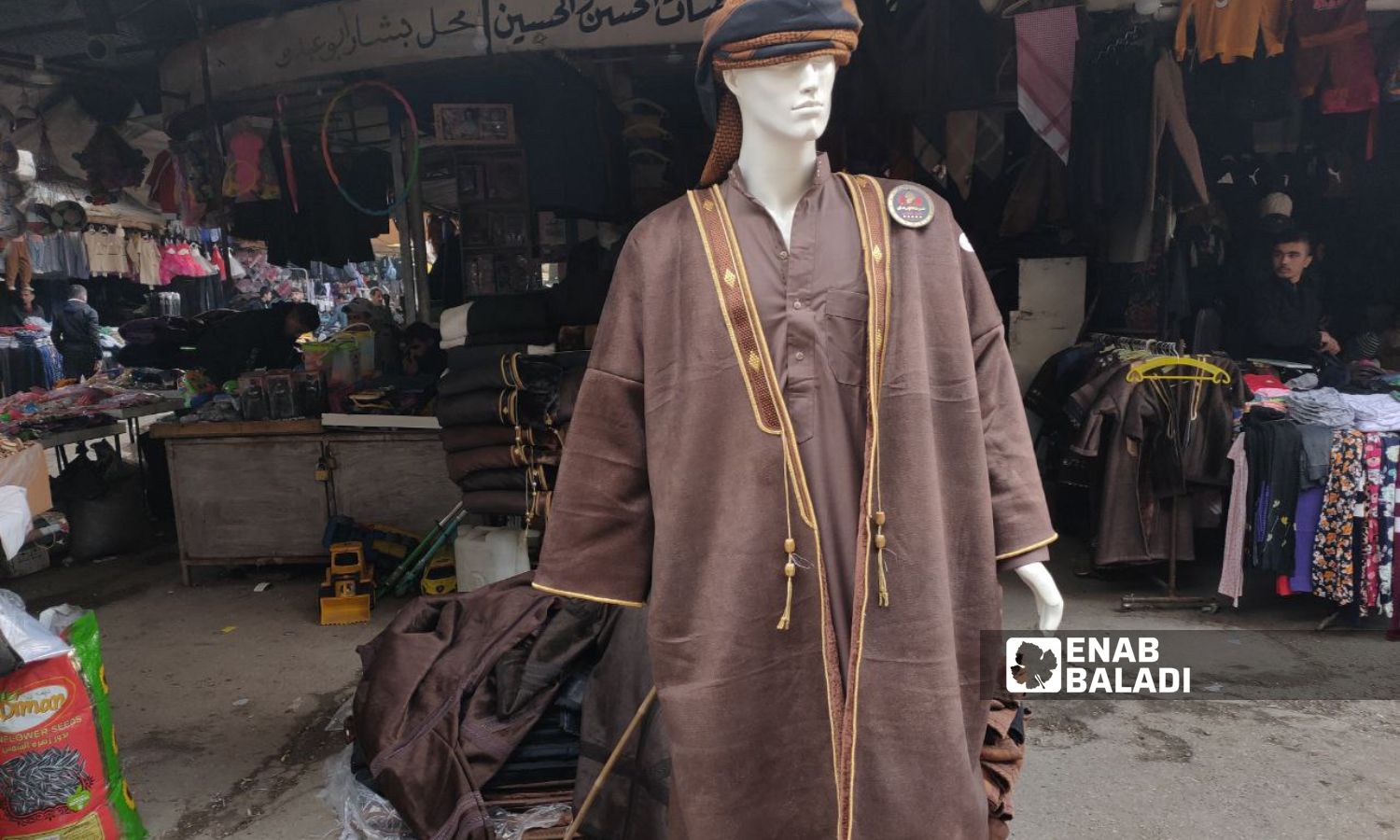



Al-Hasakah – Majd al-Salem
A single winter garment locally known as “farwa” is hardly ever forsaken by Hajj Mohammed al-Dahawi (67 years old) from the Qamishli countryside with the onset of each winter, similar to thousands of men from al-Hasakah governorate who wear it.
Al-Dahawi told Enab Baladi that the farwa as a winter garment enjoys significant popularity and is unrivaled, widely spread in the region, and considered a traditional attire that was specific to the Arab residents of the area for hundreds of years.
He added that it effectively shields against the cold of winter and is suited and “practical” because the nature of rural work in farming or animal husbandry necessitates a man to stay outside the house for most daylight hours in winter, thus the farwa is a suitable solution that covers the entire body of the man and provides him warmth, prestige, and masculinity.
He mentioned that shepherds were the most keen on wearing farwa during winter, as they spend time with their sheep in the wilderness and pastures they roam in search of feed for days and nights, but with the evolution of life, circumstances changed, and wearing farwa extended to the inhabitants of the villages and then the cities.
Hamid al-Soufi (46 years old), an owner of a clothing store from the town of Ma`bada, told Enab Baladi that there is a good demand for buying farwa and it is no longer limited to the rural people, as was the case in the past, but city dwellers are also keen on purchasing it.
He added that what increased sales is its growing popularity among young people, the evolution in its elegant designs, and the variety in its beautiful “youthful” colors. The traditional black and brown colors are not the only ones prevalent now; there are colors that entered like silver, light red with its gradients, and gold. Also, there are farwas made specifically for women, and this too has made for them a good market among area residents.
He mentioned that store owners obtain the farwa from the region’s production or import it from outside the governorate, like from Aleppo for example.
The prices of the farwa range between 300,000 and up to 15 million Syrian pounds (about 1000 US dollars), as Enab Baladi observed in the markets of Qamishli and al-Hasakah.
Ibrahim al-Ali (43 years old), a tailor from Qamishli, explained to Enab Baladi that the reason for this variation in prices, between the acceptable and the very high, is the difference in the type and nature of the fabric used, and its source, whether it is imported or local.
He added that the type of fur used, whether natural (animal) or artificial, also raises costs, because it is “the essential part that provides warmth,” and hence this traditional attire was named “farwa”
The artificial type is the cheapest, followed by the farwa made with sheep’s wool, and then comes the most expensive, called “Al-Tafileyah” or “Al-Ghanamiyah” (named after sheep).
There is also “farwa Al-Tilianiyah,” named after the lamb which is only a few months old and called “Al-Tili”, and its fur is natural and made from the skin of young lambs (of only a few months of age).
“Al-Tilianiyah” is known for its softness and beauty, and its outer part is made from English or Indian baize. The latter can cost up to about a thousand dollars, and those who purchase it are considered well-to-do, and some buy it as a valuable gift for chiefs and dignitaries of tribes.
There is also an accessory to the farwa called “Al-Ibtiyah,” which is worn under the farwa and is also made of leather and covers half of the body (resembling a jacket), but the majority do not wear it, and it is tailor-made according to special orders.
if you think the article contain wrong information or you have additional details Send Correction